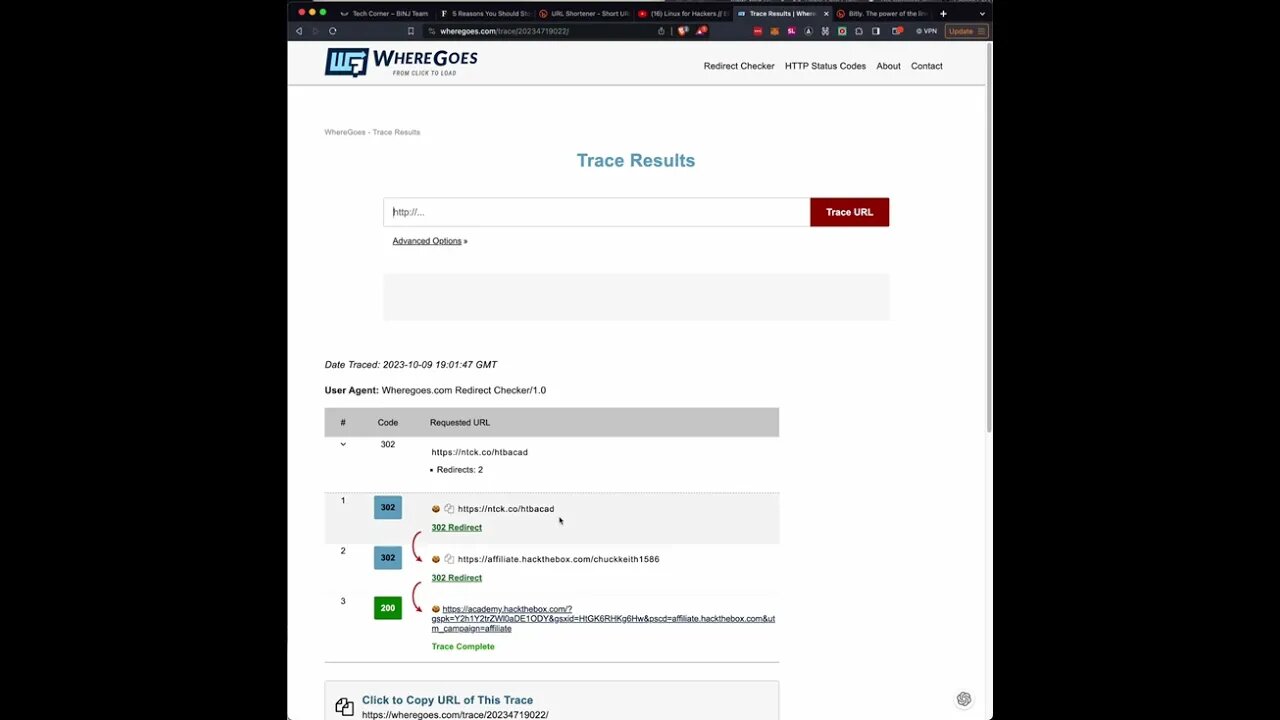Premium Only Content

The Perils of Tiny URLs and How to Navigate Them Safely
🔥 Key Resources 🔥
Seize this opportunity! For a limited time, enjoy a generous 40% discount on our membership: http://cryptojay.net
Familiarize yourself with our platform and the benefits we offer - Tour The Bitcoin Academy - https://thebitcoinacademy.io/start/
Stay updated with the latest from us on Twitter: https://twitter.com/_BitCoinAcademy
Subscribe to our YouTube channel for the newest video content: https://www.youtube.com/c/TheBitcoinAcademy
Summary:
George begins by emphasizing the potential dangers of using tiny URLs. These shorter links, often generated by platforms like Bitly, can be misleading as users don’t know where they’ll end up. He cites that authoritative sources like Forbes have cautioned against using shortened URLs. He also notes that while such URLs were previously popular on platforms like Twitter, this has become less common since Twitter started allowing long URLs that don’t affect post length.
George then provides a live demonstration of how users can ensure that the tiny URLs they encounter are safe to click on. For Bitly-generated links, he suggests adding a “+” at the end of the URL. This action reveals the destination of the URL, helping users to ascertain its safety. For other URLs, George introduces the tool “wheregoes.com”, which traces where a particular tiny URL redirects to. This method helps users verify the legitimacy and safety of a link before clicking it.
Key Points:
1. The talk focuses on the risks associated with tiny URLs.
2. Tiny URLs can be misleading because users cannot determine their destination at a glance.
3. Renowned publications like Forbes have warned against shortening URLs.
4. Social media platforms like Twitter have reduced the necessity of tiny URLs by allowing longer ones without affecting post length.
5. George provides a demonstration for users to check the safety of tiny URLs.
6. By adding a “+” at the end of a Bitly link, users can view its destination.
7. The “+” technique is specific only to Bitly-generated links.
8. The website “wheregoes.com” can trace the redirection path of a tiny URL.
9. Users can use these techniques to safeguard against malicious or unintended links.
10. The primary objective is to promote safe browsing habits for all users.
Disclaimer
The content shared in this presentation is intended solely for informational and educational purposes. It should not be considered as financial, legal, or tax advice. The views and opinions expressed are exclusively those of the presenter, who does not hold any licensure as a financial advisor or registered investment advisor.
Investing and trading in cryptocurrencies are activities that carry a substantial risk of financial loss. The information provided does not imply or guarantee success or any specific outcomes. Potential investors and traders are urged to consult with professional advisors before making any financial decisions.
Please conduct your own research and due diligence, and acknowledge that you are solely responsible for any investment decisions you make. The presenter is not liable for any potential losses incurred.
-
 1:27:58
1:27:58
Coin Stories with Natalie Brunell
14 hours agoQuantum Threat to Bitcoin? Pysh & Lepard Break Down Quantum, A.I. Displacement and Growing Socialism
1181 -
 3:53
3:53
WildCreatures
3 days ago $0.15 earnedSwimming With the Giants, Whale Sharks of Darwin Island
1.1K3 -
 12:09
12:09
Actual Justice Warrior
16 hours agoTEEN Mob ATTACKS Domino's Pizza
2.08K14 -
 18:59
18:59
Nate The Lawyer
1 day ago $0.77 earnedDon Lemon Spreads Lie: Crossing Border Illegally Isn’t a Crime. FACT CHECK
13.3K23 -
 2:04:30
2:04:30
Side Scrollers Podcast
18 hours agoGold’s Gym CONTROVERSY & BOYCOTT + Craig ADMITS DEFEAT + More | Side Scrollers
63.4K12 -
 1:26:06
1:26:06
MattMorseTV
17 hours ago $0.13 earned🔴Trump's Press Conference MASSIVE UPDATE.🔴
14.7K62 -
 21:39
21:39
Nikko Ortiz
3 days agoI Take A North Korean Shooting
53.7K8 -
 LIVE
LIVE
Lofi Girl
3 years agolofi hip hop radio 📚 - beats to relax/study to
176 watching -
 2:14:13
2:14:13
FreshandFit
15 hours agoShe Was Given Extravagant Gifts And STILL Friendzoned Him +EXPOSED
203K46 -
 1:16:07
1:16:07
Man in America
13 hours agoOperation Gladio: The CIA, Mossad & City of London’s Plan for a New World Order
35K34